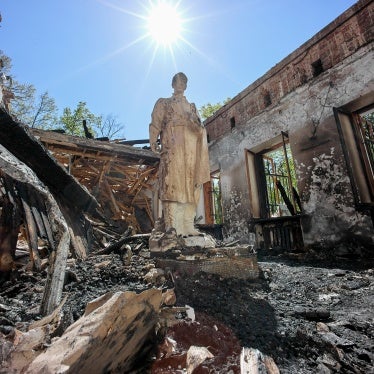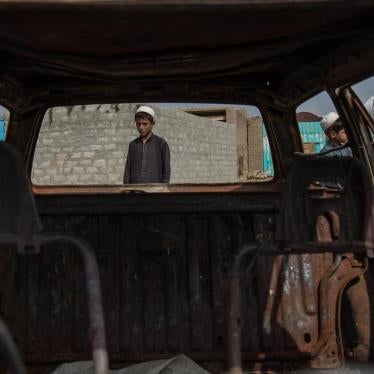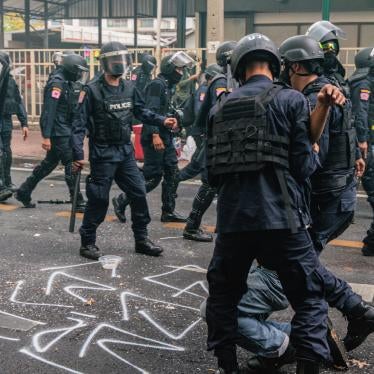Dangerous explosive duds from cluster munitions used by allied forces in the 1991 Persian Gulf War are still being found and destroyed in Kuwait at the startling rate of 200 per month, according to official documents obtained by Human Rights Watch.
Human Rights Watch released a new briefing paper today warning against the use of cluster bombs in Iraq.
Documents from the Kuwait Ministry of Defense show that 2,400 explosive cluster munition duds were found and destroyed in Kuwait in 2002, and a similar number the previous year.
"The use of cluster munitions in Iraq will endanger civilians for years to come," said Mark Hiznay, senior researcher at Human Rights Watch and author of the new briefing paper. "Cluster bombs also threaten U.S. and friendly soldiers during combat."
Human Rights Watch has issued detailed analyses of the U.S. use of cluster bombs in the Persian Gulf War, in Kosovo, and in Afghanistan.
During the 1991 Gulf War, the United States and its allied coalition dropped bombs containing about twenty million submunitions, and also reportedly fired artillery projectiles containing more than thirty million submunitions. These resulted in millions of hazardous duds, each functioning like an indiscriminate antipersonnel landmine.
At least eighty U.S. casualties during the war were attributed to cluster munition duds. More than 4,000 civilians have been killed or injured by cluster munition duds since the end of the war.
Human Rights Watch called attention to four particular types of U.S. cluster munitions that have had high failure rates in combat or in testing:
The Multiple Launch Rocket System (MLRS) with M77 submunitions has had a failure rate of 16 to 23 percent. Each standard volley of twelve MRLS rockets would likely result in more than 1,200 explosive duds.
155mm Dual Purpose Improved Conventional Munition (DPICM) artillery projectiles with M42 and M46 submunitions have had a failure rate of 14 percent.
Rockeye CBU-99/CBU-100 air-dropped bombs with Mk 118 submunitions. This Vietnam-era cluster munition was used extensively in the 1991 Gulf War and has accounted for a very large percentage of the explosive duds subsequently encountered. Almost 20 percent of the cluster munition duds found in Kuwait in 2002 were from Rockeye bombs.
The CBU-87 Combined Effects Munition with BLU-97 submunitions had a failure rate of at least 7 percent in Yugoslavia and Kosovo in 1999. More than 10,000 air-dropped CBU-87s with more than 2 million submunitions were used in the Gulf War; more than 1,000 with over 200,000 submunitions were used in Afghanistan.
The United States has cluster munitions containing more than one billion submunitions in current stockpiles, including more than 434 million 155mm DPICM artillery submunitions and more than 309 million MLRS rocket submunitions.
Human Rights Watch has called for a global moratorium on use of cluster munitions until the humanitarian problems are addressed. Short of that commitment, Human Rights Watch urges that the United States, United Kingdom, and others that may deploy cluster munitions in Iraq take the following steps:
Prohibit the use of any cluster munitions in attacks on or near populated areas;
Suspend use of and withdraw cluster munitions that have been tested and identified as producing high dud rates;
Refrain from using or transferring out-of-date types of cluster munitions in an effort to "clean the closet" of stockpiles;
Record, report, track, and mark known or suspected cluster munition strike areas; and,
Preserve this information so it can be disseminated quickly in clearance efforts.






